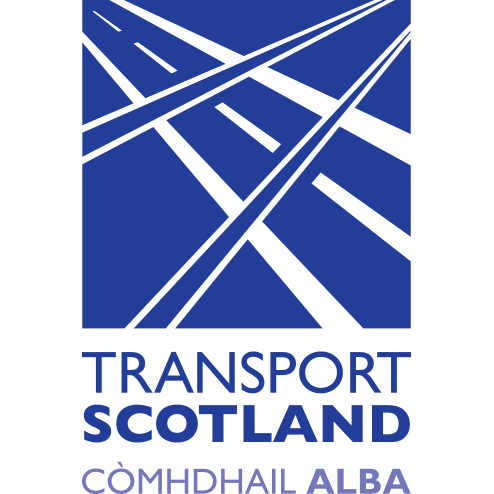Design Manual for Roads and Bridges




Drainage
Design
CD 529 Design of outfall and culvert details
(formerly HA 107/04)
Version 1.0.1
Summary
This document contains the requirements for the design of outfall and culvert details.
Application by Overseeing Organisations
Any specific requirements for Overseeing Organisations alternative or supplementary to those given in this document are given in National Application Annexes to this document.
Feedback and Enquiries
Users of this document are encouraged to raise any enquiries and/or provide feedback on the content and usage of this document to the dedicated National Highways team. The email address for all enquiries and feedback is: Standards_Enquiries@highwaysengland.co.uk.
This is a controlled document.Latest release notes
| Document Code | Version number | Date of publication of relevant change | Changes made to | Type of change |
|---|---|---|---|---|
| CD 529 | 1.0.1 | December 2021 | Core document | Incremental change to advice |
| Editorial explanations revised and added in Terms and definitions and Scope. | ||||
Previous versions
| Document Code | Version number | Date of publication of relevant change | Changes made to | Type of change |
|---|---|---|---|---|
| CD 529 | 1.0.0 | March 2020 | ||
| CD 529 | 0 | December 2019 |
Foreword
Publishing information
This document is published by National Highways.
This document supersedes HA 107/04, which is withdrawn.
Contractual and legal considerations
This document forms part of the works specification. It does not purport to include all the necessary provisions of a contract. Users are responsible for applying all appropriate documents applicable to their contract.
Introduction
Background
This document gives the requirements and advice for the design of outfalls and culverts. It supplements the guidance given in CIRIA C786 [Ref 1.N] and explains how the guidance in that document applies to motorways and all purpose trunk roads.
In this document ‘outfall’ is a physical asset at the point where a drainage system discharges into a different type of drainage system. The purpose of such an outfall is to discharge water from a drainage system into a receiving water body at a specific location without causing erosion or embankment instability. Note that the definition for an outfall used in this document is focused on a different aspect of an outfall relative to the definition given in CD 535 [Ref 3.I]. In CD 535 the emphasis is on an ‘outfall’ demarcating the ownership boundary between an Overseeing Organisation's highway drainage network and a third party drainage system and might, or might not be coincident with a physical asset.
Assumptions made in the preparation of this document
The assumptions made in GG 101 [Ref 2.N] apply to this document.
Terms and definitions
| Term | Definition |
|---|---|
| Culvert | A culvert is defined as a buried conduit which carries, or is intended to carry, flow from a watercourse, and which does not form part of a larger pipe network. |
| Environmental protection agency | The legislative body responsible for managing the quality of water bodies and flood risk in public watercourses. |
| Groundwater | All water below the surface of the ground and in direct contact with the ground or subsoil. |
| Outfall | In this document ‘outfall’ is a physical asset to mitigate erosion or embankment instability at the point where a drainage system discharges into a different type of drainage system or receiving water body. |
| Outlet | The point at which water flows from a sub-surface continuous asset (such as a pipe) to an open surface asset (such as a ditch or a pond). |
| Screen | A screen at the inlet and outlet (or outfall) of a culvert can deter unauthorised access. A screen on the inlet of a culvert can prevent debris from entering a culvert and causing a blockage. |
| Surface water | A watercourse, lake, pond, reservoir, canal or stretch of coastal water. |
| Water body | A body of surface water or groundwater. |
1. Scope
Aspects covered
1.1 The requirements and advice in this document shall apply to the design of outfalls and culverts.
NOTE 1 The design of outlets from edge of pavement runoff is not covered in this document and is given in CD 521 [Ref 4.I].
NOTE 2 Culverts and outfalls having a diameter or clear span greater than 900mm are defined as structures and guidance on their structural design is not given in this document.
NOTE 3 The requirements and advice for the structural design of concrete box structures is given in BS 5911-1 [Ref 1.I].
NOTE 4 The requirements and advice for the structural design of corrugated steel buried structures is given in CD 375 [Ref 2.I].
NOTE 5 The requirements and advice for the structural design of concrete pipe structures is given in BS 5911-1 [Ref 1.I].
NOTE 6 The requirements and advice for the structural design of clay pipe structures is given in BS EN 295-1 [Ref 6.I].
Implementation
1.2 This document shall be implemented forthwith on all schemes involving culverts or outfalls on the Overseeing Organisations’ motorway and all-purpose trunk roads according to the implementation requirements of GG 101 [Ref 2.N].
Use of GG 101
1.3 The requirements contained in GG 101 [Ref 2.N] shall be followed in respect of activities covered by this document.
2. Design of outfalls
2.1 Where an outfall is to a public watercourse, the design shall be determined in consultation with the environmental protection agency.
2.2 The guidance on the hydraulic design of outfalls, as given in Chapter 12 of CIRIA C786 [Ref 1.N], shall be used in the design of outfalls.
2.3 The design of screens on outfalls shall follow the guidance in Chapter 4 of CIRIA C786 [Ref 1.N].
3. Design of culverts
3.1 The presence and probable size of culverts shall be determined early in the design process.
NOTE 1 Culverts beneath highways have to accommodate restrictions imposed by carriageway alignment and road construction, as these affect the cover to the top of the culvert.
NOTE 2 Culverts can be designed to facilitate crossings of highway ditches or channels.
NOTE 3 Culverts can be designed to transfer the drainage run from one side of the carriageway to the other.
3.2 Where a culvert conveys a public watercourse, the design shall be determined in consultation with the environmental protection agency.
NOTE Where a culvert conveys a highway drain that is not a public watercourse, no consultation is required.
3.3 The guidance on the hydraulic design of culverts, as given in Chapter 12 of CIRIA C786 [Ref 1.N], shall be used in the design of culverts.
NOTE 1 Culverts with a diameter or clear span of 900 mm or less are not structures and are considered to have a design life of 60 years.
NOTE 2 Culverts with a diameter or clear span greater than 900 mm are structures and the design life for such structures is given in CD 350 [Ref 5.I].
3.4 Where a circular culvert is longer than 12 metres it shall be at least 1.2 metres in diameter to facilitate access for maintenance.
3.5 Where a box culvert is longer than 12 metres it shall have both span and height at least 1.2 metres to facilitate access for maintenance.
3.5.1 The minimum culvert diameter should be 450 mm as smaller sizes are prone to blockage.
3.6 The design of screens to culverts shall follow the guidance in Chapter 4 of CIRIA C786 [Ref 1.N].
3.7 Where a safety risk assessment identifies a need for a screen, this shall be provided.
3.8 The provision of screens to culverted public watercourses shall be discussed and agreed with the environmental protection agency.
3.9 Where a culvert conveys a public watercourse, its invert shall be depressed below the natural bed level as described in Chapter 9 of CIRIA C786 [Ref 1.N].
3.10 Where a culvert conveys a highway drain that is not a public watercourse, the invert shall be at least 75 mm below the bed of the drain.
3.11 Where a culvert conveys a highway drain that is not a public watercourse, the sides of the drain shall be higher than the culvert soffit.
3.12 Where a culvert conveys a highway drain that is not a public watercourse, the headwall of the culvert shall extend into the banks of the drain over the full depth.
3.12.1 The headwall of a culvert which conveys a highway drain that is not a public watercourse may be a simple brick structure, cast in situ concrete, reinforced concrete or concrete bagwork.
3.13 Where a culvert conveys a highway drain that is not a public watercourse, a concrete apron shall be designed in front of the headwall to suppress vegetation growth immediately upstream of the inlet and downstream of the outlet.
3.14 Where a culvert conveys a carriageway channel, it shall be designed to carry the design flow without surcharging.
3.14.1 Where a culvert conveys a carriageway channel, it may be designed to carry more than the design flow to allow for sediment deposition within the culvert.
4. Normative references
The following documents, in whole or in part, are normative references for this document and are indispensable for its application. For dated references, only the edition cited applies. For undated references, the latest edition of the referenced document (including any amendments) applies.
| Ref. | Document |
|---|---|
| Ref 1.N | Construction Industries Research and Information Association, London. Benn J, Kitchen A, Fosbeary C, Faulkner D, Hemsworth M, Latham D. CIRIA C786, 'Culvert, screen and outfall manual' |
| Ref 2.N | National Highways. GG 101, 'Introduction to the Design Manual for Roads and Bridges' |
5. Informative references
The following documents are informative references for this document and provide supporting information.
| Ref. | Document |
|---|---|
| Ref 1.I | BSI. BS 5911-1, 'Concrete pipes and ancillary concrete products. Specification for unreinforced and reinforced concrete pipes (including jacking pipes) and fittings with flexible joints (complementary to BS EN 1916:2002)' |
| Ref 2.I | National Highways. CD 375, 'Design of corrugated steel buried structures' |
| Ref 3.I | National Highways. CD 535, 'Drainage asset data and risk management' |
| Ref 4.I | National Highways. CD 521, 'Hydraulic design of road edge surface water channels and outlets' |
| Ref 5.I | National Highways. CD 350, 'The design of highway structures' |
| Ref 6.I | BSI. BS EN 295-1, 'Vitrified clay pipe systems for drains and sewers: Requirements for pipes, fittings and joints (Designated Standard - CPR)' |